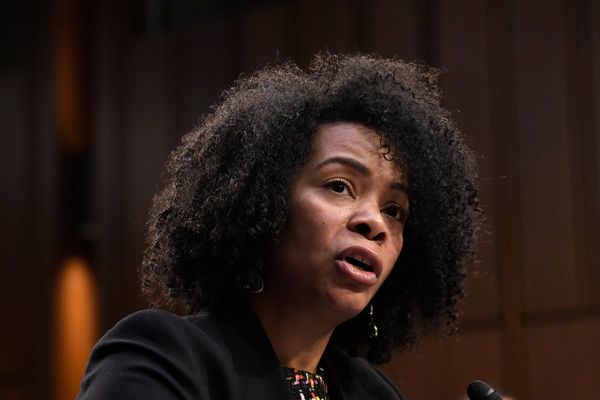If the length of our lives is a good measure of our well-being, the United States is in some trouble.
The average life expectancy for an American born in 2021 was just shy of 76 years and 5 months — more than half a year shorter than it was in 2020, according to a new government report. It was the lowest such figure since 1996 and follows roughly a decade of stagnation in adding years to our lifespans.
The numbers, released Thursday by the Centers for Disease Control and Prevention, mark the second consecutive year of decline in average life expectancy, a streak that hasn't happened in more than a century.
The pandemic has played a major role in that trend. COVID-19 deaths increased from 350,831 in 2020 to 416,893 in 2021. That allowed the new disease to maintain its position as the third-leading cause of death in the U.S., behind heart disease (695,547 deaths) and cancer (605,213 deaths).
But the CDC made clear that the coronavirus was not the only corrosive influence on America's life expectancy.
The year 2021 saw 106,699 drug overdose deaths in the United States, the CDC's National Center for Health Statistics said in a separate report released Thursday. That's a dramatic spike from 2020, a year in which fatal overdoses had already reached a historic peak of 91,799.
While deaths caused by cocaine and methamphetamine rose in 2021, the steepest hike in overdose deaths — 22% — was attributed to synthetic opioids such as fentanyl.
The new figures indicate that drug fatalities have risen fivefold over the last two decades, the CDC said.
Considering deaths from all causes, the age-adjusted mortality rate for Americans last year was 879.7 deaths per 100,000 people, up 5.3% from 2020.
For every age group, death rates continued to be highest among Black and Latino men, and among men and women who identify as American Indian/Alaska Native. However, 2021 saw a notable improvement in the health of Black and Latino populations relative to white Americans.
After researchers accounted for age, they found that white women and men were more likely to die in 2021 than they were in 2020. By contrast, Black and Latino men were less likely to die last year than the year before, and death rates for women in both groups held steady.
Dr. Stephen Woolf, a researcher at Virginia Commonwealth University who tracks Americans' health status, said the apparent reversal of death trends between white Americans and communities of color was something of a mystery.
But "there's an obvious hypothesis that's sort of the elephant in the room," said Woolf, who was not involved in the CDC reports. Early COVID-19 death rates were highest among Latino and American Indian/Alaska Native communities, an experience that appears to have prompted them to get vaccinated in 2021, Woolf said. By contrast, "many white populations either believed they were at less risk, or had political objections to getting vaccinated or wearing masks."
As waves of illness swept across the country, the result of a vaccination rate disparity would be that white Americans would begin to experience higher COVID-19 death tolls, which would translate into a lower life expectancy.
The ages at which people died last year also helps explain how average life expectancy at birth dropped from 77 years in 2020 to 76.4 years in 2021.
The pandemic, of course, has taken its heaviest toll on senior citizens, especially those 75 and older. But these victims are closer to their predicted life's end than other Americans. As a statistical matter, a child's death, or even the death of a 45-year-old, will put a deeper dent in the nation's average lifespan than the passing of an octogenarian.
But COVID-19 mortality rates for middle-aged and younger adults reached higher levels in 2021 than in 2020. And in both years, drug overdose rates were highest for adults ages 25 to 54. In combination, trends like these contributed to a striking finding: that between 2020 and 2021, death rates increased for every age group other than for infants.
When statisticians compared the historic probability of death at each age with actual deaths in 2021, they found that 35- to 44-year-olds experienced a 16.1% increase in premature deaths, the biggest jump of any age group. The death rates for people 25 to 34 increased 13.4%, while those for people 45 to 54 rose by 12.1%.
Even for children between 1 and 4 years old, mortality rates in 2021 were 10% higher than in 2020.
Aside from a few bumps along the road, U.S. lifespans have followed an upward course since 1900, when newborn Americans could expect to live 47.3 years. The one major exception: Average life expectancies plummeted in 1917 and 1918, when a world war and a flu pandemic conspired to reduce average life expectancy from 54.5 years in 1915 down to 39.1 years in 1918.
America's steady life expectancy gains began to stagnate around the year 2000, when deaths from drugs, suicides, gun violence and chronic illnesses began a steady upward climb. By 2010, the United States had lost its edge over most other affluent countries and American lifespans began falling behind.
By 2020, the average longevity of newborn Americans was 4.7 years lower than their counterparts in other wealthy places — closer to the averages seen in Peru and Thailand than to those of countries like France, Israel or South Korea.
With the world's third-highest COVID-19 mortality rate, the United States was unlikely to close the gap in 2021. Two years of declining life expectancy may not prove to be the start of a long-term trend. But Woolf said the lingering mental and physical health effects of the pandemic, the continuing scourge of addiction, and the outsize toll of gun violence do not augur well for bringing U.S. life expectancy in line with our peers.
"The experience of other countries tells us it wasn't inevitable that it had to be this way," Woolf said. Countries that embraced COVID-19 vaccines and other public health measures, and that administered medical care more equitably, "have shown it was possible to have an epidemic and have a different outcome," he said.







